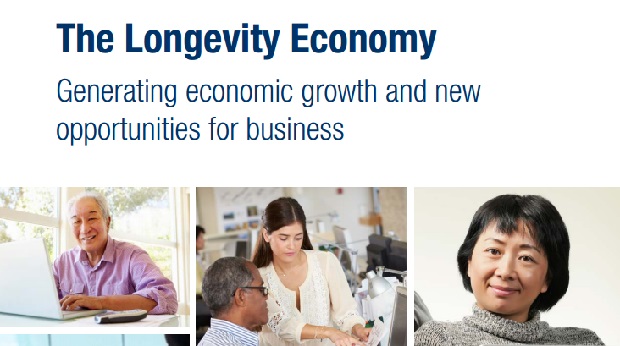A powerful new force is changing the face of America, composed of 106 million people responsible for at least $7.1 trillion in annual economic activity—a figurethat is expected to reach well over $13.5 trillion in real terms by 2032.
This is the Longevity Economy, representing the sum of all economic activity serving the needs of Americans over 50 and including both the products and services they purchase directly and the further economic activity this spending generates. This population of older workers and retirees represents both a transformative force by itself, expected to account for more than half of US GDP by 2032, and a net national asset—a fast-growing contingent of active, productive people who are working longer and taking the American economy in new directions.
Along the way, the Longevity Economy is upending conventional wisdom about how aging affects the overall US economy, and the country. Rather than lengthening extreme old age, the 30 years added to lifespans in the 20th century have resulted in a longer middle age—extending the period when workers are at their most productive and creative, and representing a major, often untapped resource.
Rather than being a burden to society, these older people will continue to fuel economic activity far longer than past generations had, and those born after them will continue the trend. They already inject some $4.6 trillion a year in spending on consumer goods and services, including health care, into the overall economy, according to research by Oxford Economics. That figure rises to $7.1 trillion when we add the effects of this direct spending as it circulates through the economy (these consequential results are called “induced economic effects”).
This activity provides employment for nearly 100 million Americans. In addition, the Longevity Economy is a huge source of charitable giving, contributing nearly $100 billion annually to a variety of causes and concerns, which represents nearly 70% of all charitable donations from individuals.
NEWSLETTER
EMISSION LE GRAND ENTRETIEN
SERVICES POUR LES ENTREPRISES SUR LE MARCHE DES SENIORS
- Réaliser une étude marché
- Développer (ou redresser) une activité Senior
- Obtenir un avis rapide (Gratuit*)
- Bénéficier d'un coaching / mentoring (court et long terme)
- Vous former (présentiel ou en ligne)
- Vous faire connaître des autres acteurs de la Silver économie
- Organiser et booster son webinaire
- Identifiez et rencontrez les « bons » partenaires [Mises en relation]
- Conférences et webinaires en ligne (Replay)
- La chaîne YouTube de Frédéric Serrière
- Découvrir la Silver économie avec le Guide SilverEco 2021
- Webinaire : les clés pour redresser une activité SilverEco




